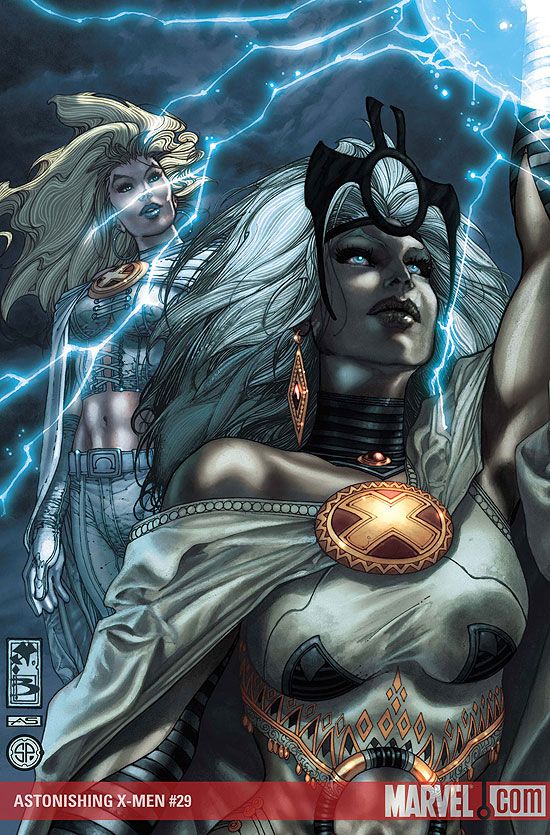I don't know that we're talking elephant-in-the-room status, but there are three concerns that need to be addressed when talking about "Astonishing X-Men" #29, three points that hover around this comic -- this series -- regardless of what's actually inside its pages.
The first concern is the slow release schedule of this series. From the second half of the Whedon/Cassaday run through the (so far) brief Ellis/Bianchi period, "Astonishing X-Men" has slowly leaked into comic book shops, one issue here, another issue a few months later. Since Ellis is telling one long story in his opening arc, and since we don't seem to be anywhere near the end after almost eleven months, the pace can be off-putting. It makes one less eager to read this series because there's none of the serialized momentum anymore. More on this later.
The second concern is Bianchi's artwork, which has gained the reputation as being ornately detailed at the expense of storytelling. The mass of internet critics would like to tell you that Bianchi can draw a well-composed panel, a page full of luxurious (if slightly murky designs), but the panel-to-panel, page-to-page sequentials don't work very well at all. More on this later, too.
The third concern is that Ellis is telling a multiverse story in a Marvel comic. One school of thought says that Marvel is no place for elaborate parallel world stories, and such Silver Age sci-fi fodder is best left to DC. Another school of thought says that parallel world stories are pointless anywhere, acting as the narrative equivalent of those bad high school creative writing submissions that end, "...and it was all just a dream. Or was it?"
All three of these concerns seem to have made the Ellis/Bianchi "Astonishing X-Men" into a marginal project. A little thing that's easy to ignore. A comic on the outskirts of what matters.
But this is one of the most interesting projects at Marvel right now, and with Marvel producing a swath of strong comic offerings in the past year, that's an impressive feat.
Don't worry about the release schedule. This comic comes out when it's ready to come out, and while it loses its serialized momentum this way, it's worth the wait to get Bianchi's art on every issue. Bianchi is simply amazing, and though some of the pages seem developed from his rougher layouts (this issue seems to begin in sharp focus then get a bit fuzzy in the middle with a few less-finely-rendered pages), this is a great-looking X-Men comic. It doesn't look like Jim Lee, or John Byrne, or John Cassaday, or Terry Dodson, or any of the other fan-favorite artists who've done impressive work with this team of mutants. It looks like Simone Bianchi, an artist who filters his European comic book influences through a filter of HR Giger. It's a lovely, obsessive, carved-from-marble, fluid, dynamically-composed, outrageously delicate paradox of solidity and ephemera. Bianchi is wonderful, and though his storytelling style may be a bit different from the American-accepted norm of superhero action comics, his work makes this comic something special.
And, yes, it is a story of the multiverse, and the plot details may be as fuzzy as the art in the middle of the issue, it's still a pretty basic alternate world riff. It's more "Doctor Who" than "Trinity," let's say. It's the invasion of the X-Men's universe by mutants from another reality, with Forge and his genetically-engineered sentries as the bulwark against the attack from outside. That's an X-Men plot that rises above the Claremontian relationship/prejudice drama that has so burdened this franchise over the years, and who better to draw such devilish splendor that Simone Bianchi?
"Astonishing X-Men" #29 may not look like most other Marvel comics, and may not read like many X-Men comics in history, but it's very good, and it's surely worth the wait.

